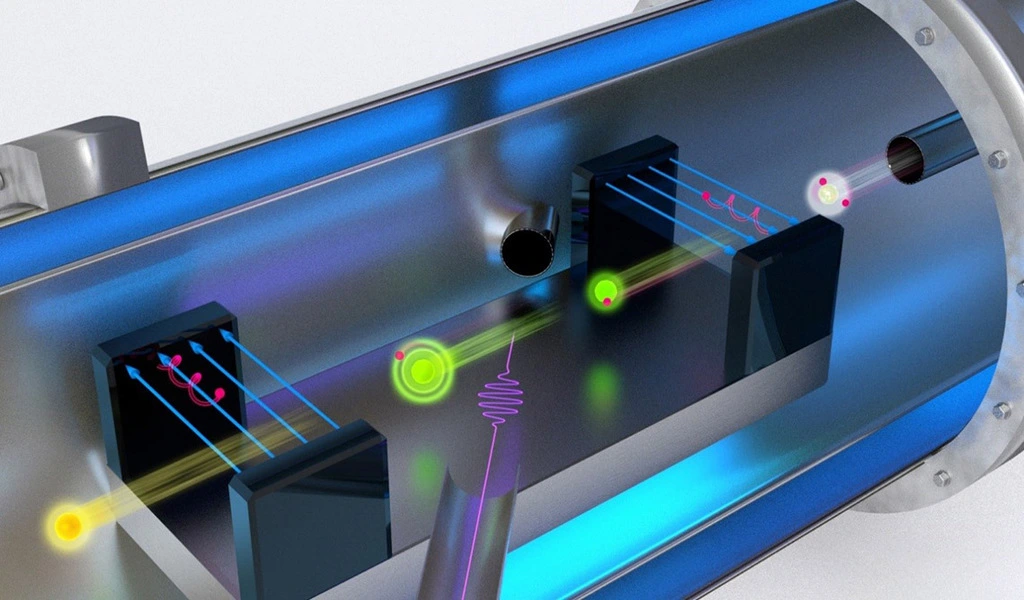Energy Beams: A recent breakthrough in high proton energy beams research has opened the door to potential advancements in next-generation technologies, including medical applications, particle accelerators, and fusion power.
In this article, we’ll discuss the significance of this discovery, led by researcher Arniko Meinhold, and explore how radiation pressure plays a crucial role in these advancements.
Background: High Proton Energy Beams and Their Applications
What are high proton energy beams?
High proton energy beams are streams of protons accelerated to extremely high velocities. These beams are a critical component of various technologies and applications, including:
- Particle accelerators used in high-energy physics research
- Proton therapy for cancer treatment
- Fusion power generation
Current challenges in proton beam technology
One of the primary challenges in utilizing high proton energy beams is achieving the desired beam intensity and energy without damaging the equipment or creating harmful byproducts.
Researchers have been working tirelessly to develop methods to enhance proton beam performance while mitigating potential risks.
Arniko Meinhold and the Breakthrough in Proton Beam Technology
The role of radiation pressure
Radiation pressure is the force exerted by electromagnetic radiation on a surface or object. This force has been identified as a promising mechanism for accelerating protons to high energies.
However, previous attempts to harness radiation pressure have been limited by inefficiencies and technical challenges.
Arniko Meinhold and his team of researchers have made a significant breakthrough by developing a novel method that improves the performance of proton beams accelerated by radiation pressure. Their approach addresses the existing limitations and holds the potential to revolutionize the field.
The innovative approach
The researchers’ approach involves using high-intensity lasers to generate a strong radiation pressure, which then accelerates protons in a highly controlled manner.
By optimizing the laser parameters and the interaction between the laser and the proton source, the team was able to enhance the performance of the proton beam significantly.
This innovative method allows for greater control over the proton beam’s energy and direction, enabling higher beam intensities without compromising safety or equipment integrity.
Potential Impact on Next-Generation Technologies
Medical applications
The advancements in proton beam technology have the potential to revolutionize cancer treatment.
Proton therapy, which uses high-energy proton beams to target and destroy cancer cells, can benefit from the increased precision and control provided by the new method.
This could lead to more effective treatments with fewer side effects for patients.
Particle accelerators and high-energy physics
Particle accelerators are essential tools in the study of high-energy physics. Improved proton beam performance can lead to more accurate and efficient experiments, enabling researchers to uncover new insights into the fundamental nature of the universe.
Fusion power generation
Fusion power, which relies on the fusion of atomic nuclei to release energy, has long been considered the Holy Grail of clean, sustainable energy production.
Enhancements in proton beam technology could play a vital role in advancing fusion power research, bringing us one step closer to realizing this elusive energy source.
Conclusion
The groundbreaking work of Arniko Meinhold and his team in improving high proton energy beams through radiation pressure has the potential to transform a wide range of next-generation technologies.
From medical applications to sustainable energy production, this breakthrough marks a significant milestone in the ongoing quest to harness the power of proton beams for the betterment of society.
Related CTN News:
Relativity Space Launches World’s 1st 3D-Printed Rocket ‘Terren 1’, But Fails To Reach Orbit
What Is A Trojan Horse And How To Protect Your Computer From Trojan Horses?
LastPass vs Dashlane: Which Password Manager Is Better For You?
⚠ Article Disclaimer
The above article is sponsored content any opinions expressed in this article are those of the author and not necessarily reflect the views of CTN News






